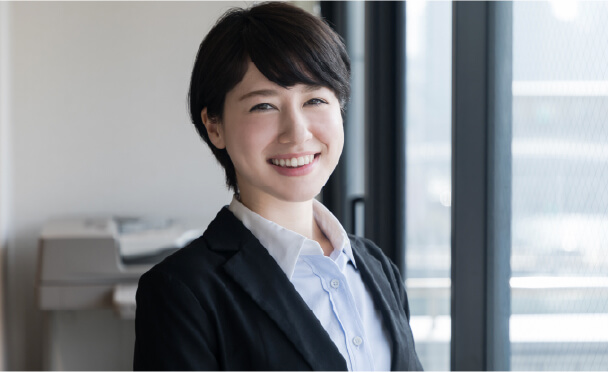Those who can't hear Japanese,
There are 2 patterns.

Japanese people use about 900 words in a day
It is said that Japanese adults use about 800 to 900 words in a day.
Japanese people learn about 20,000 words in elementary school, and use less than 5% of those words in a day.
While we're having a conversation using mainly basic vocabulary at the elementary school level.
Why can't they understand Japanese?
We will introduce the reasons for this and the countermeasure learning method practiced by NihongoDO, a Japanese language coaching school.
- Index
- 1. What are the two patterns of people who cannot hear Japanese?
- 1-1. Pattern 1: You don't know the word that you heard in the first place.
- 1-2. Pattern 2: Word meanings and sounds are not tied together in the mind of the listener.
- 2. Which pattern are you?
- 3. Measures for Pattern 1: Perfect middle school level vocabulary.
- 4. Measures for Pattern 2: Shadowing to connect sound and meaning
- 4-1. Why shadowing can help you connect sound to meaning.
- 4-2. However, shadowing is a somewhat challenging learning method.
- 4-3. If it becomes just a sound imitation, it's not good.
- 4-4. Reading aloud is recommended for beginners of Japanese.
- 5. The best material for shadowing is... movies.
- 5-1. Despite those reasons, movies are hard.
- 6. What is the next step for those who can now hear Japanese?
What are the two most common patterns leading people to not hear Japanese?
When we cannot understand Japanese, we tend to think that our listening ability is insufficient, but there is a clear cause.
Depending on the cause, people who cannot understand Japanese can be classified into two patterns. The learning methods required for each of them are completely different, so please be absolutely sure which pattern you fall into first.

Pattern 1: You don't know the word that you heard in the first place.
It's a simple reason.
If you do not know the words being spoken, of course you cannot understand them.
Beginner Japanese language learners fall into this category, so it is necessary to learn basic vocabulary and other basic skills first.
However, even if you memorize the words, it is not easy to listen to Japanese smoothly. This is because it corresponds to the second pattern.
Pattern 2: Word meanings and sounds are not tied together in the mind of the listener.
You know the word, but you do not understand what it actually sounds like in Japanese. Even if they speak a word they know, they do not realize it is a word they know because it is not connected to a sound.
In Japanese, it is not uncommon for the correct word to be different from the spoken word. You need to understand how the words you have learned are pronounced in live conversation.
By connecting the sounds and meanings of various words and Japanese phrases, students will naturally become able to listen to Japanese.

Which pattern are you?
In order to be able to understand Japanese, you must first know which pattern you fall into. This can be easily ascertained with the following test.
- Start off with a clip of Japanese audio that you struggle to understand, as well as transcripts for this audio.
- Read the transcript.
-
Less than 95% of the words are known → Pattern 1
More than 95% of the words are known → Pattern 2
Although 95% may seem high, it is acceptable to have one word in every 20 words that you do not understand. It is a common theory that if you exceed this number, you will gradually have trouble understanding the meaning of the word.
Speeches by celebrities are suitable for this test because the content is often in written form. Movies and dramas are also recommended since scripts can be found online.
If you have listening materials, you could use those as well.
Measures for Pattern 1: Perfect elementary level vocabulary.
If you fall into Pattern 1, you lack vocabulary. First, learn more and more vocabulary.
Of course, there are many texts that cannot be understood using only elementary level vocabulary. For news and academic content, you will need higher level words as well.
However, most conversations do not require that level of vocabulary. We will concentrate on elementary level vocabulary first.
Countermeasure for Pattern 2: shadowing to connect sound and meaning.
If you know the word at the elementary level or above, all you need to do is to connect the meaning of the word with its sound.
At NihongoDO, shadowing is the main method we use to do this.

Why shadowing can help you connect sound to meaning.
There are many types of shadowing, but the basic methods are as follows:
- Listen to the Japanese audio.
- Immediately after that, imitate the sound and speak on your own.
- If there is any part of the sentence that does not make sense, check the sentence to see what it says.
Some may feel as if it is speaking or pronunciation practice, but the act of imitating sounds is "checking whether you are understanding what is being said". The main focus is only on listening to the audio.
Then, by checking the parts of the sentence that are not being heard, you can understand how the word/phrase is spoken.
That being said, shadowing is a somewhat challenging learning method
Shadowing is very effective in listening, but it is also a challenging method of learning.
- If it is not done the right way, it will not produce results.
- There are many types, and you need to find the best method according to your Japanese language ability and progress.
- Even the simplest method is difficult for Japanese beginners to follow at first.
If it becomes just a sound imitation, it's not good.
If shadowing is not done with the right technique, it may not produce any results at all.
Let us give you an example: there are some students at NihongoDO who have very sensitive ears, as we sometimes find in our students. Such a person can copy a sound completely by ear and imitate it beautifully even if he/she does not understand the meaning.
You may not see what the problem with that is.
It is a bit complicated, but shadowing is learning to link sound and meaning. You may be able to imitate the sounds, but if you do not understand the meaning, you will not get any results.
To avoid such problems, NihongoDO offers regular one-on-one meetings with a dedicated consultant. There, you will actually shadow in front of us to check that you are learning with the correct method.

Reading aloud is recommended for beginners of Japanese.
It was mentioned earlier that shadowing is difficult for beginners in Japanese. What is recommended to such people is to read aloud. This is a method in which you listen to the audio and read the same English sentences as the audio.。
This is less difficult and will help you get used to the Japanese sounds. However, even if you do only this, it is still difficult to connect sounds and meanings, so you should try shadowing when you are somewhat familiar with it.
At NihongoDO, many beginner Japanese students are allowed to start by reading aloud.
A good material for shadowing is...movies.
The best material for shadowing is a movie.
- It contains relatively realistic native conversations.
- The majority of words used in everyday life are contained in one film.
- The storyline makes it hard to get bored.
- Many films have easily available Japanese scripts.
Of course, avoid movies full of slang, etc. If business Japanese is your goal, business-related movies are preferred.
Despite those reasons, movies are hard.
Films are more challenging because of the fast pace of conversation and slang.
For those who find movies difficult, speeches are also a good option. Speeches are intended to be heard by an audience, so the speed and content are easier to understand than in a film.
Because shadowing requires customization of even a single material, NihongoDO does not leave it up to the students, but our dedicated consultants always make sure to select the most suitable material for each individual student.。

What is the next stepfor those who can now hear Japanese?
If the goal of learning Japanese is to be able to converse in Japanese, being able to understand Japanese is not enough.The next thing you should learn is speaking study. Then, you should have a real conversation with native speakers.
NihongoDO is now offering free counseling. If you are interested in learning more about shadowing techniques and other learning methods besides listening, please join us for a free counseling session.
Experience Quality Learning.
Appy for Free Counseling.
Experts at NihongoDo will conduct interview regarding the concerns and goals of learning Japanese.
We'll suggest a study method that suits you.
NihongoDO provides Free Counseling with
98% satisfied.
Before considering NihongoDO, why don't you first get Free Counseling from a Japanese language acquisition specialist?
Please refer to the learning methods proposed by Japanese language acquisition experts for future Japanese language learning and Japanese language school selection.
If you really want to learn Japanese, please try NihongoDO's Free Counseling.
A Japanese language acquisition specialist will suggest the best way to achieve your goal.
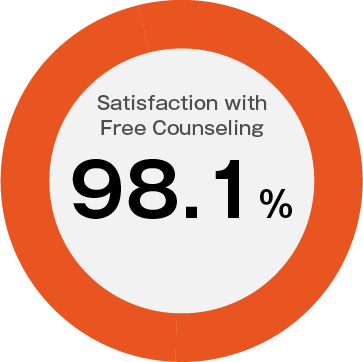
※Results of questionnaire of 52 participants to be conducted in September 2021 Free Counseling
※Results of all schools operated by Trion using the same method as NihongoDO

※Results of questionnaire of 52 participants to be conducted in September 2021 Free Counseling
※Results of all schools operated by Trion using the same method as NihongoDO
-

Asking
We will ask you about your concerns about learning Japanese, your goals for learning Japanese, and your current Japanese ability.
-

Explains learning methods
Based on the theory of second language acquisition, we will explain the mechanism by which you can speak Japanese.
-
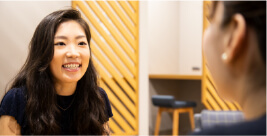
Propose a study plan
We suggest the best study plan to meet your goals, challenges, and current Japanese language skills.
-

Introduction of learning materials
Here are some of the Japanese language materials that NihongoDO mainly uses that suit you.
Flow until the start of the course
Free Counseling from NihongoDO is available online.
You can easily make a reservation in three steps.
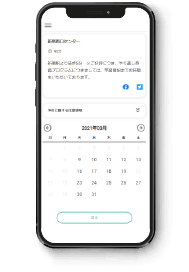
01 Apply for Free Counseling
click here
Please apply for a free Counseling first.
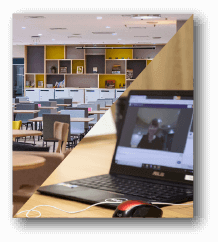
02 Join via link.
Please participate in counseling from the URL sent after booking the free counseling.
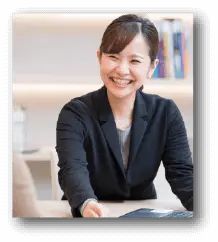
03 Conseling
A Japanese language acquisition specialist will put together the best study plan for you.Based on the plan, please consider whether to study at NihongoDO.







